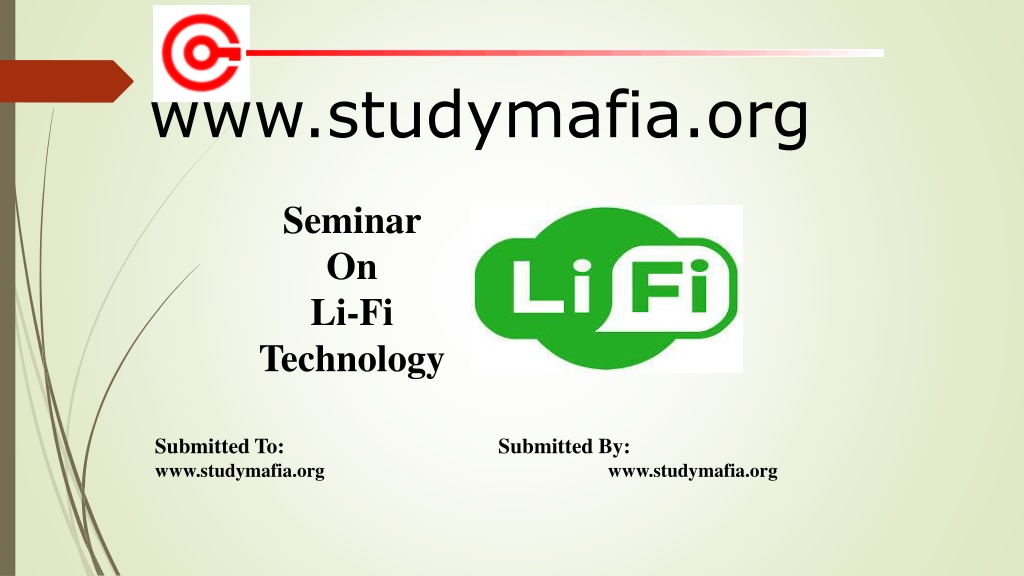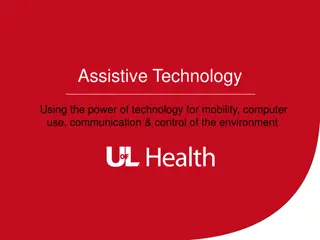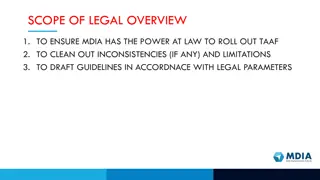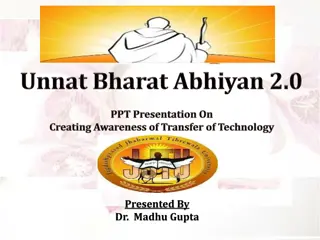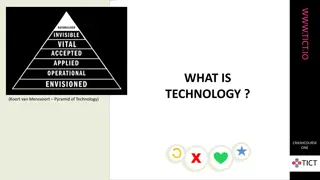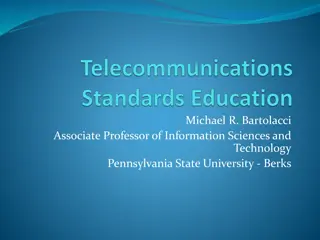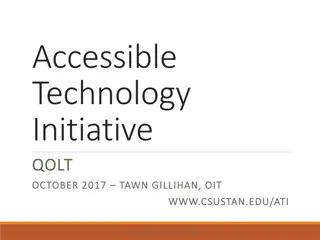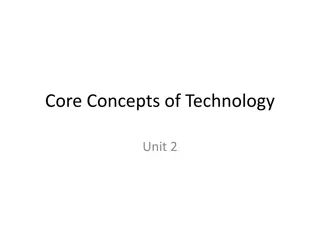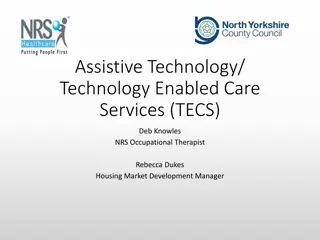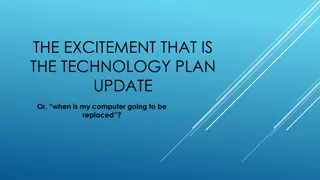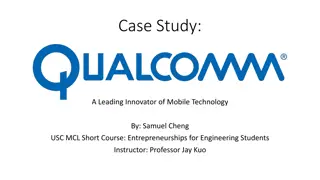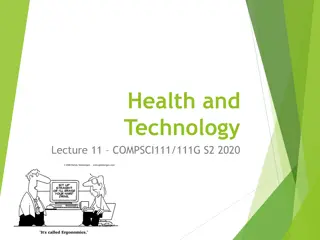Understanding Li-Fi Technology: A Comprehensive Overview
Li-Fi is a cutting-edge wireless optical networking technology that utilizes LED light bulbs for data transmission. Developed by Professor Harald Haas, Li-Fi offers high-speed connectivity by modulating light imperceptibly for optical data transmission. This technology has the potential to revolutionize wireless communication by providing faster data transfer rates and reducing radio interference. Explore the history, working principles, real-time usage, advantages, and disadvantages of Li-Fi as compared to traditional Wi-Fi.
Uploaded on Sep 16, 2024 | 2 Views
Download Presentation

Please find below an Image/Link to download the presentation.
The content on the website is provided AS IS for your information and personal use only. It may not be sold, licensed, or shared on other websites without obtaining consent from the author. Download presentation by click this link. If you encounter any issues during the download, it is possible that the publisher has removed the file from their server.
E N D
Presentation Transcript
www.studymafia.org Seminar On Li-Fi Technology Submitted To: www.studymafia.org www.studymafia.org Submitted By:
Content Introduction History How Li-Fi Works? Real Time Usage of Li Fi Comparison between Various Technologies How it is different? Wifi vs lifi Application Advantages Disadvantages Conclusion
Introduction LiFi is a wireless optical networking technology that uses light- emitting diodes (LEDs) for data transmission. LiFi is designed to use LED light bulbs similar to those currently in use in many energy-conscious homes and offices. However, LiFi bulbs are outfitted with a chip that modulates the light imperceptibly for optical data transmission. LiFi data is transmitted by the LED bulbs and received by photoreceptors.
History Professor Harald Haas, from the University of Edinburgh in the UK, is widely recognised as the original founder of Li-Fi. He coined the term Li-Fi and is Chair of Mobile Communications at the University of Edinburgh and co- founder of pureLiFi. Haas promoted this technology in his 2011 TED Global talk and helped start a company to market it. In October 2011, companies and industry groups formed the Li-Fi Consortium, to promote high-speed optical wireless systems. The first Li-Fi smartphone prototype was presented at the Consumer Electronics Show in Las Vegas from January 7 10 in 2014.
Comparison between Various Technologies Wired Fire wire USB 3.0 Thunderbolt 800 Mbps 5 Gbps 20 Gbps Wireless(Current) Wi-Fi 150 Mbps Bluetooth 3 Gbps IrDA 4 Gbps Wireless(Future) Li-Fi 10 Gbps Giga-IR 1 Gbps Wi-Gig 2Gbps
How it is different? Li-Fi technology is based on LEDs for the transfer of data. The transfer of the data can be with the help of all kinds of light, no matter the part of the spectrum that they belong. That is, the light can belong to the invisible, ultraviolet or the visible part of the spectrum.
Wifi vs lifi Li-Fi can be thought of as a light-based Wi-Fi. That is, it uses light instead of radio waves to transmit information. Instead of Wi-Fi modems, Li-Fi would use transceiver-fitted LED lamps that can light a room as well as transmit and receive information. Wi Fi is great for general wireless covrage within building and Li Fi is ideal for high density wireless date coverage in confined area and for relieving radio interference issues. So the two technologies can be considered complimentary.
Applications You Might Just Live Longer Airlines Smarter Power Plants Undersea Awesomeness It Could Keep You Informed and Save Lives
Advantages of LI-FI Li-Fi can solve problems related to the insufficiency of radio frequency bandwidth because this technology uses Visible light spectrum that has still not been greatly utilized. High data transmission rates of up to 10Gbps can be achieved. Since light cannot penetrate walls, it provides privacy and security that Wi-Fi cannot. Li-Fi has low implementation and maintenance costs.
Disadvantage Light can't pass through objects. A major challenge facing Li-Fi is how the receiving device will transmit back to transmitter. High installation cost of the VLC systems. Interferences from external light sources like sun, light, normal bulbs, opaque materials.
Conclusion The possibilities are numerous and can be explored further. If his technology can be put into practical use, every bulb can be used something like a Wi-Fi hotspot to transmit wireless data and we will proceed toward the cleaner, greener, safer and brighter future.
References www.studymafia.org www.wikipedia.com www.google.com
